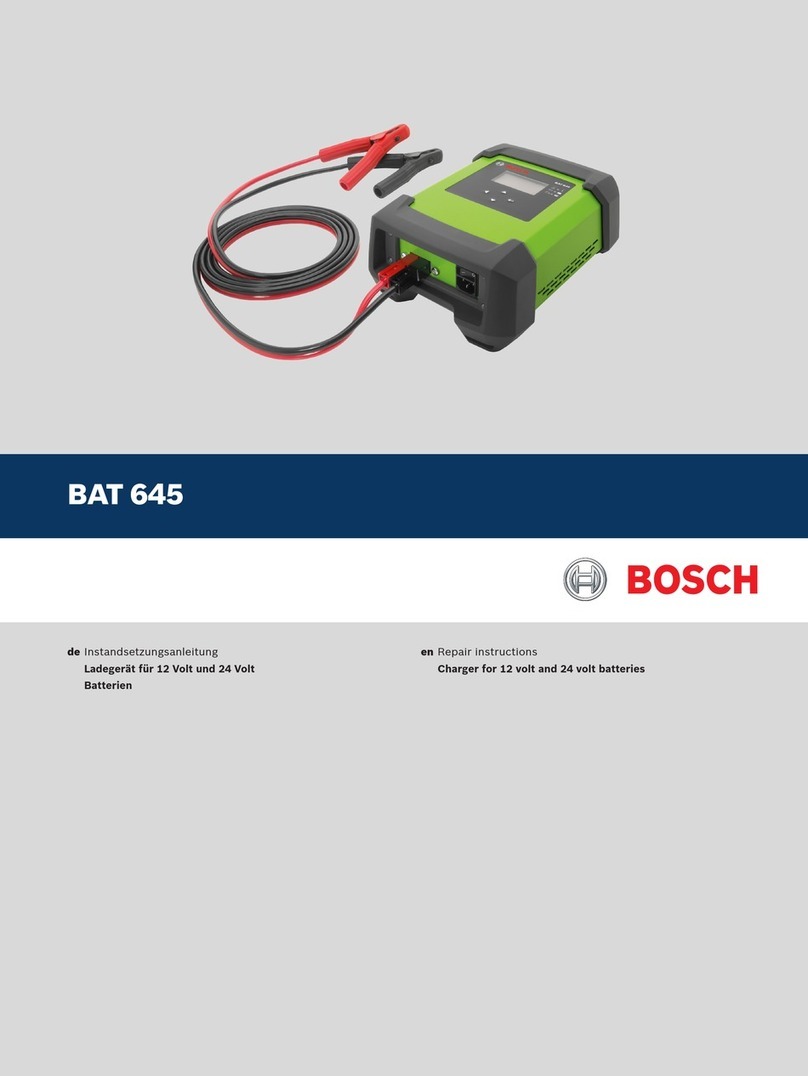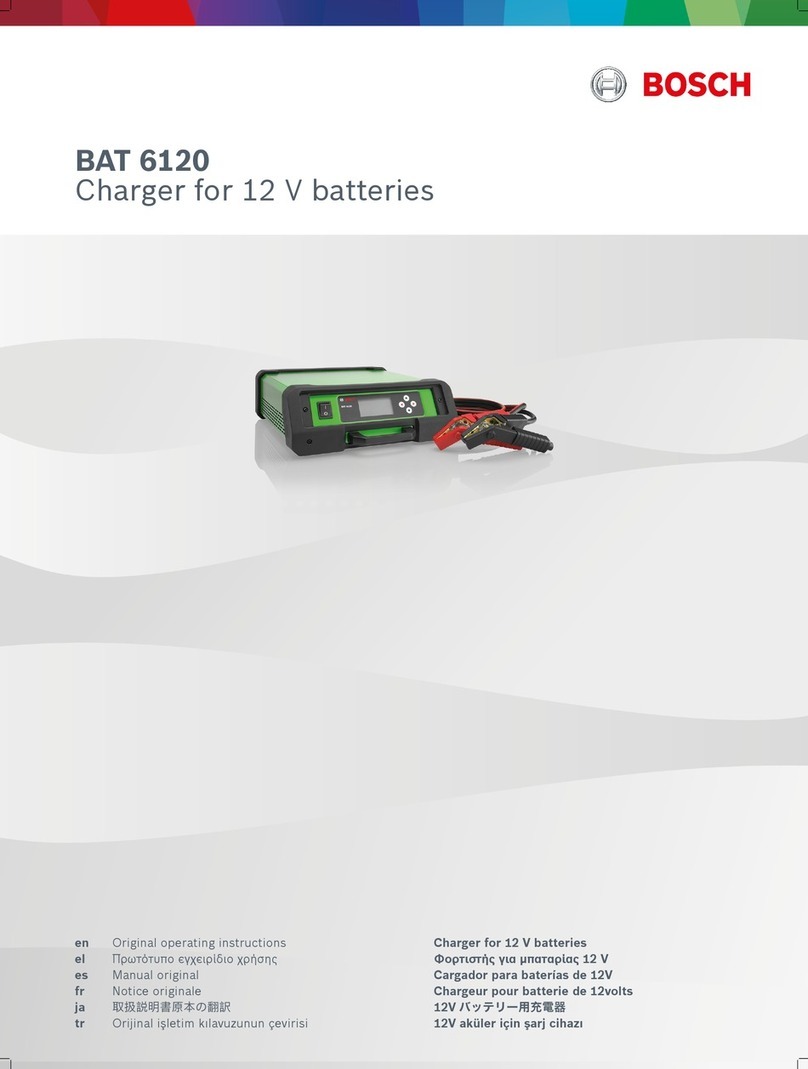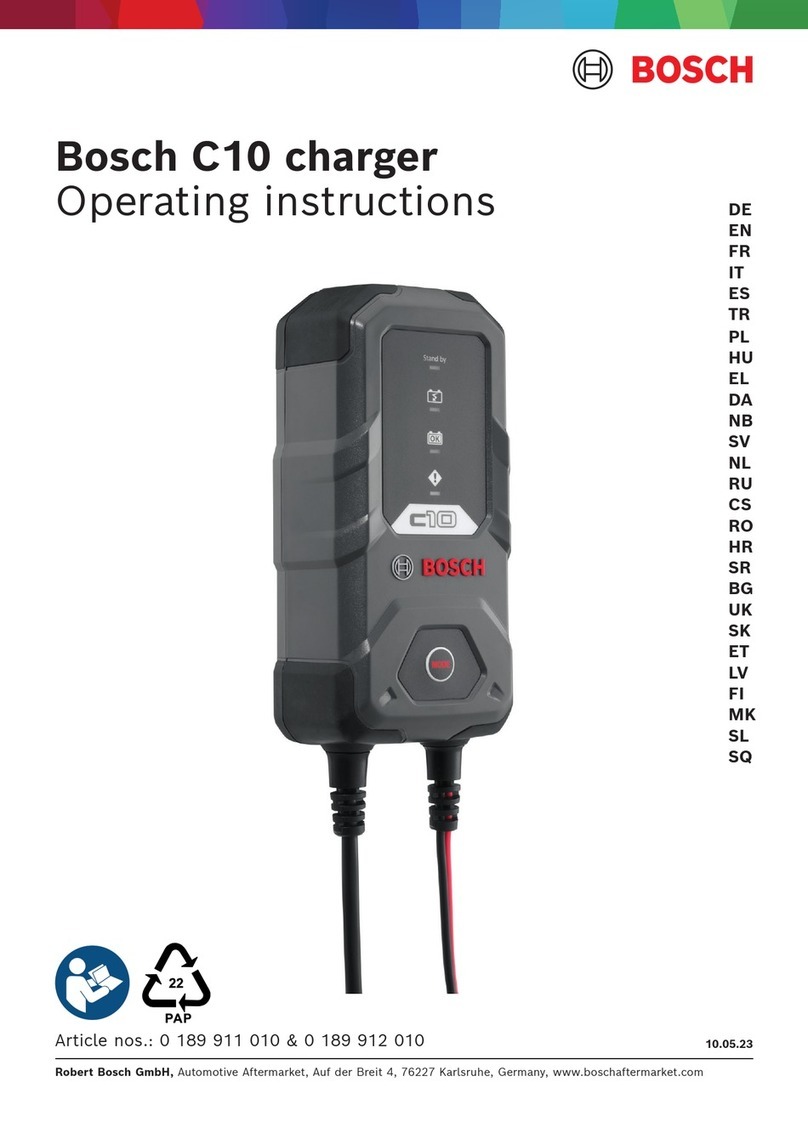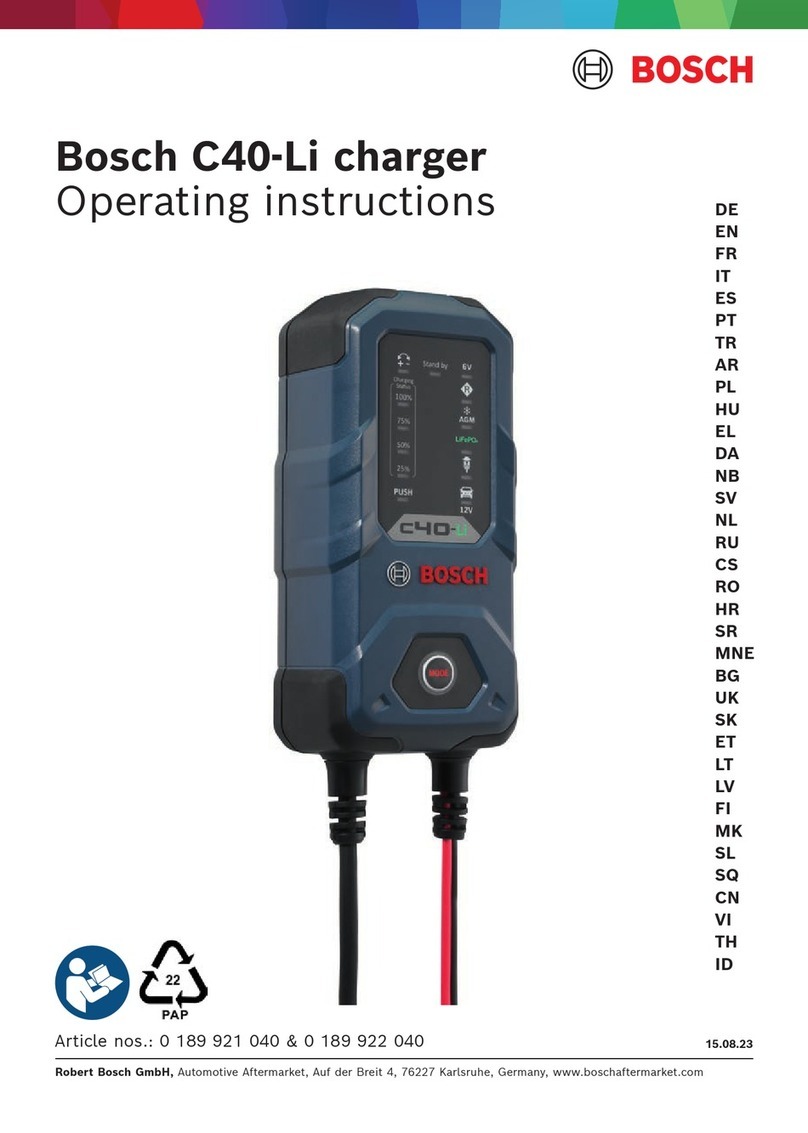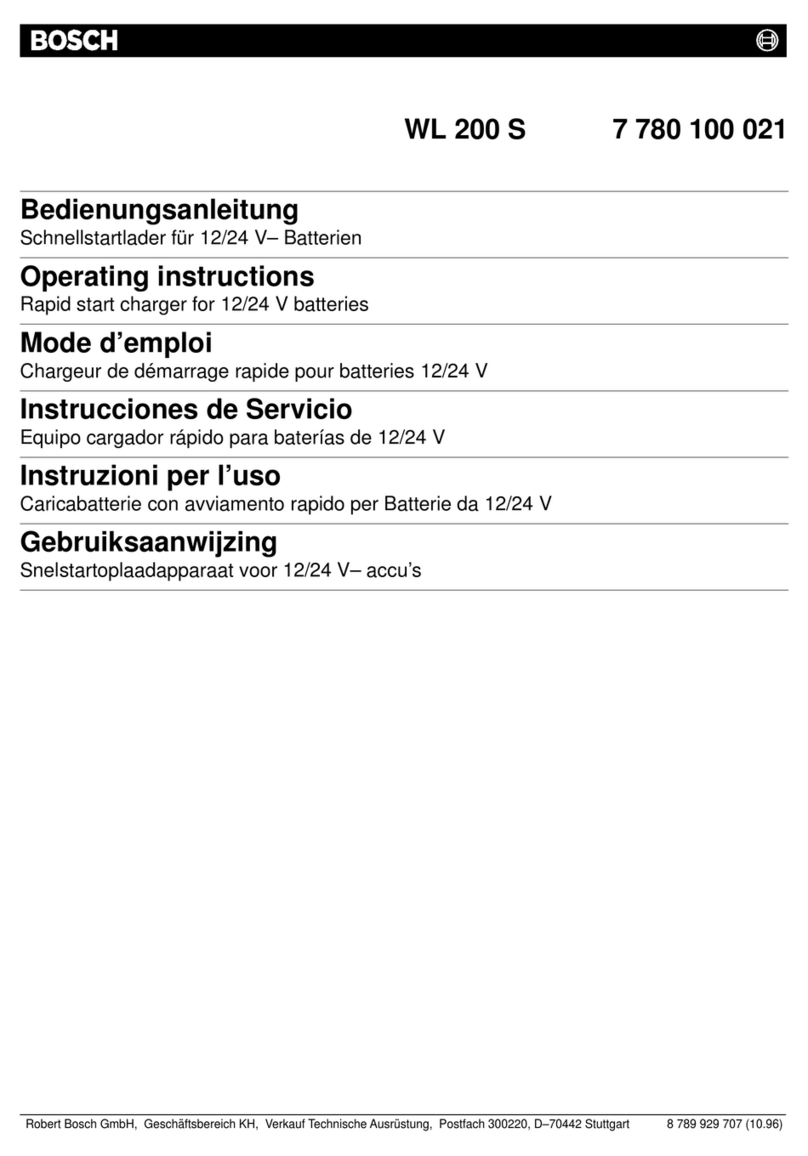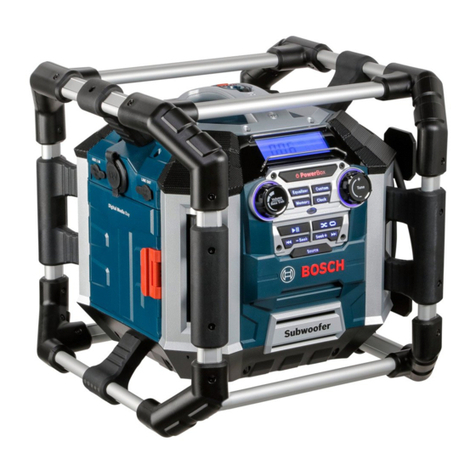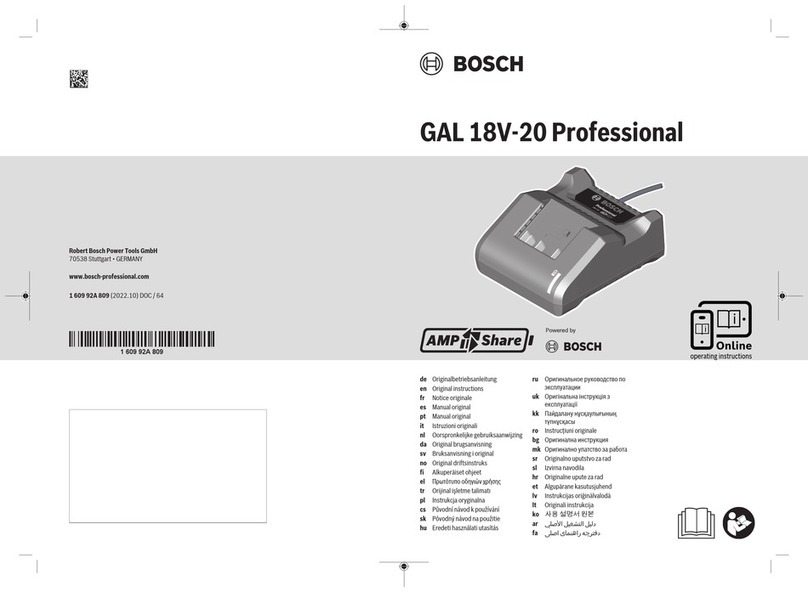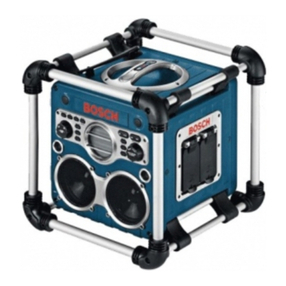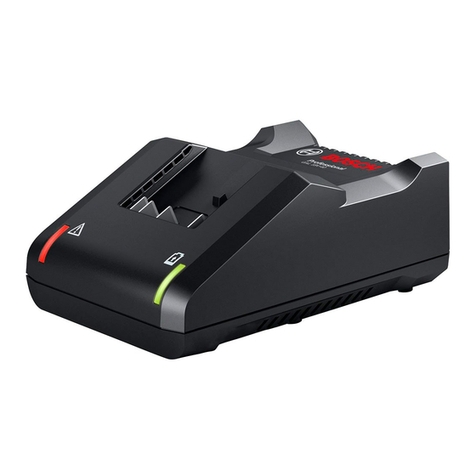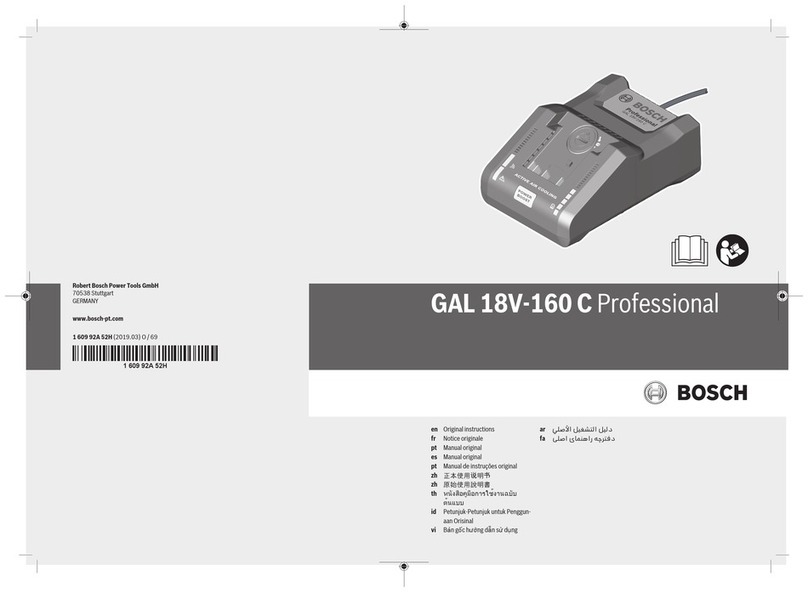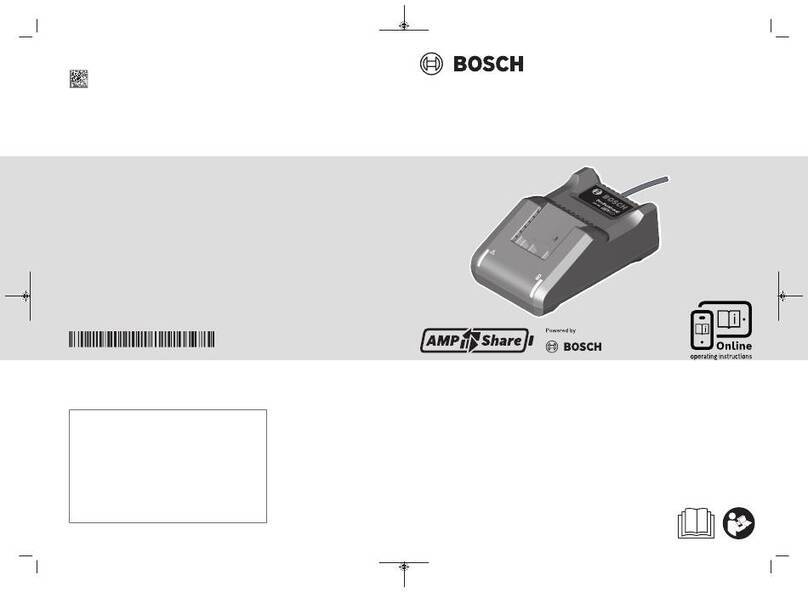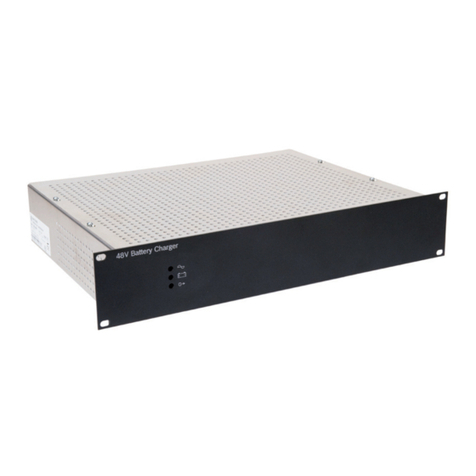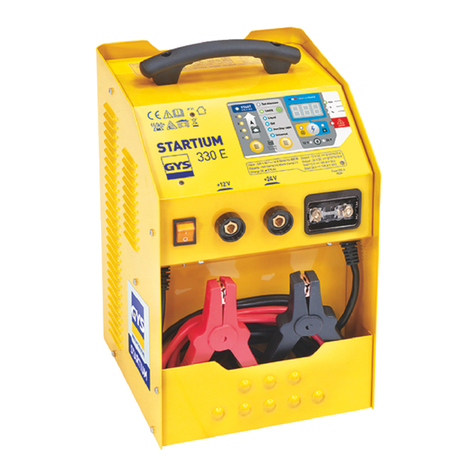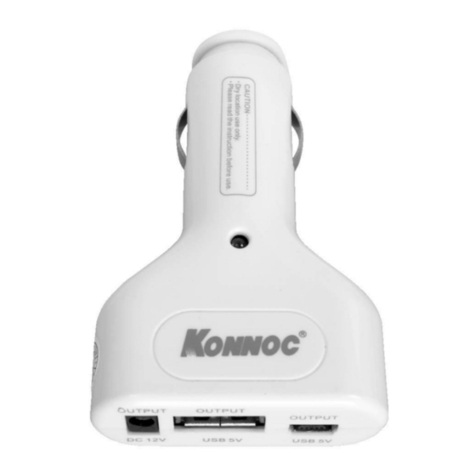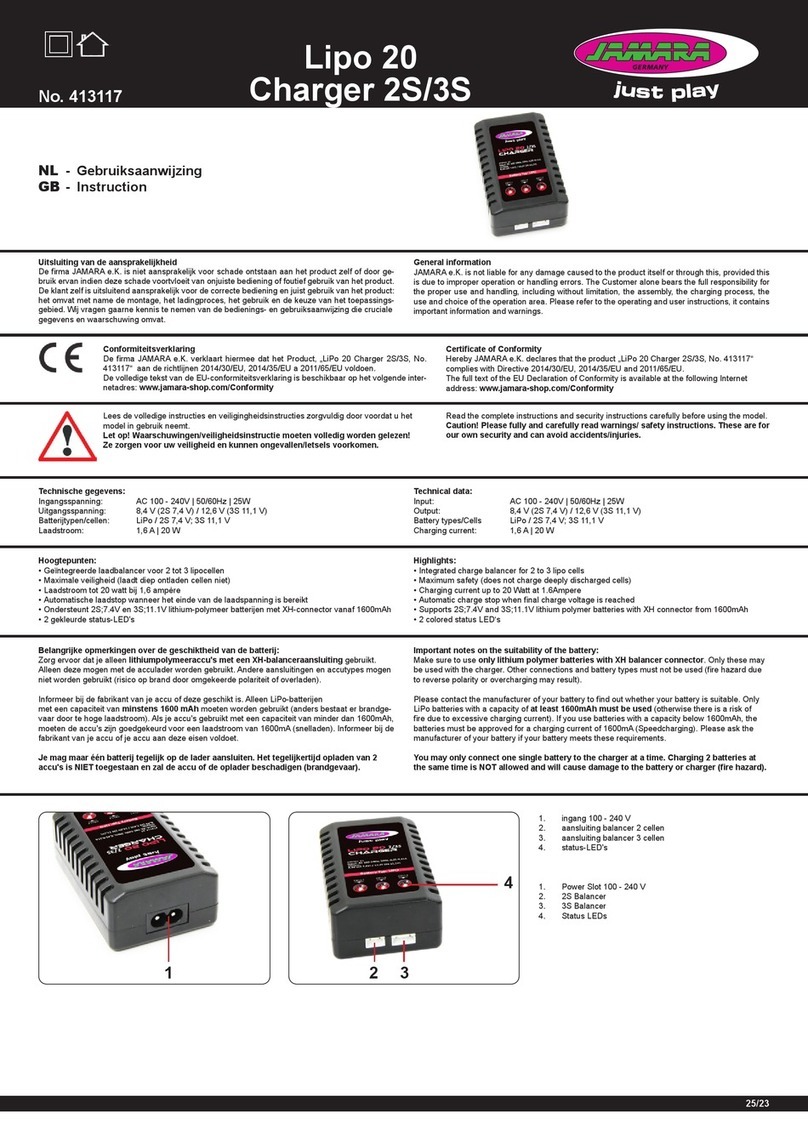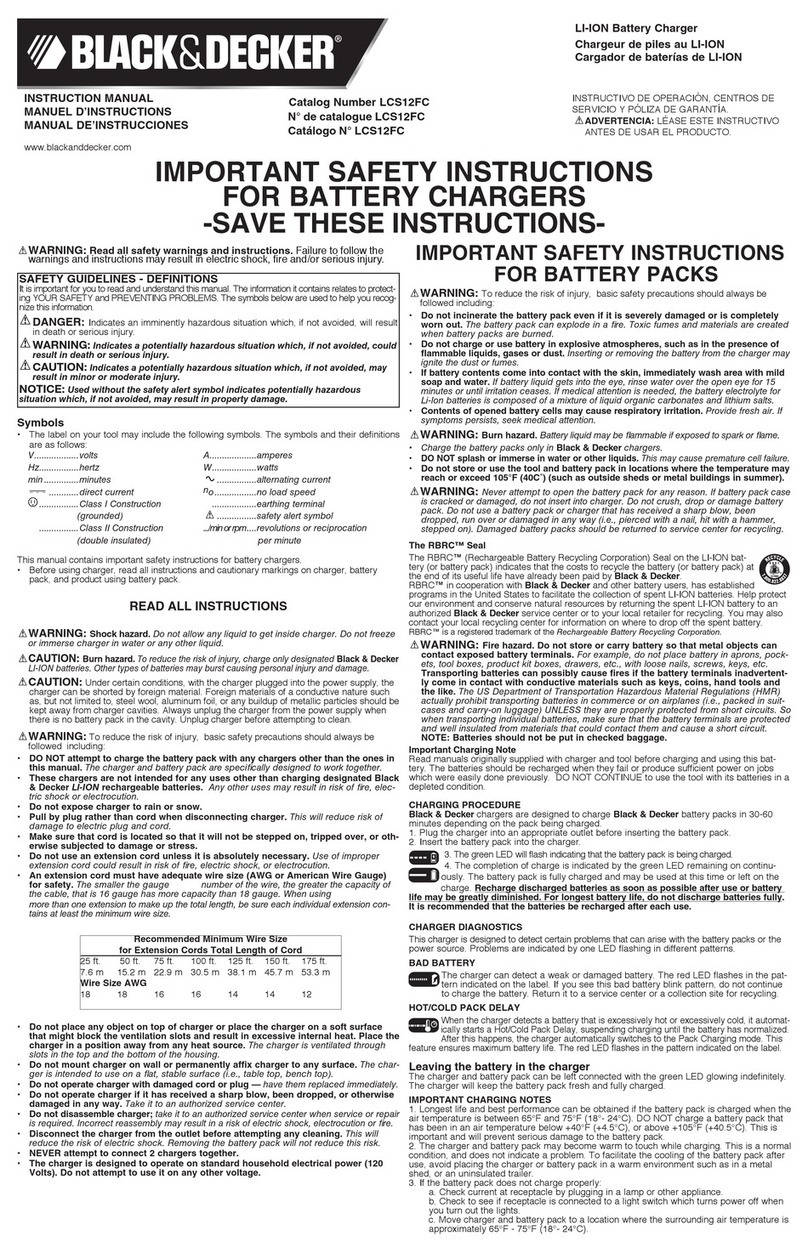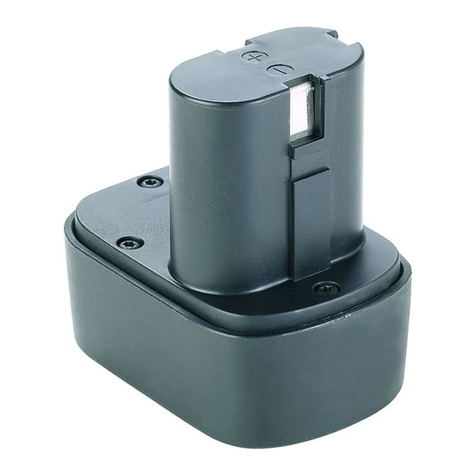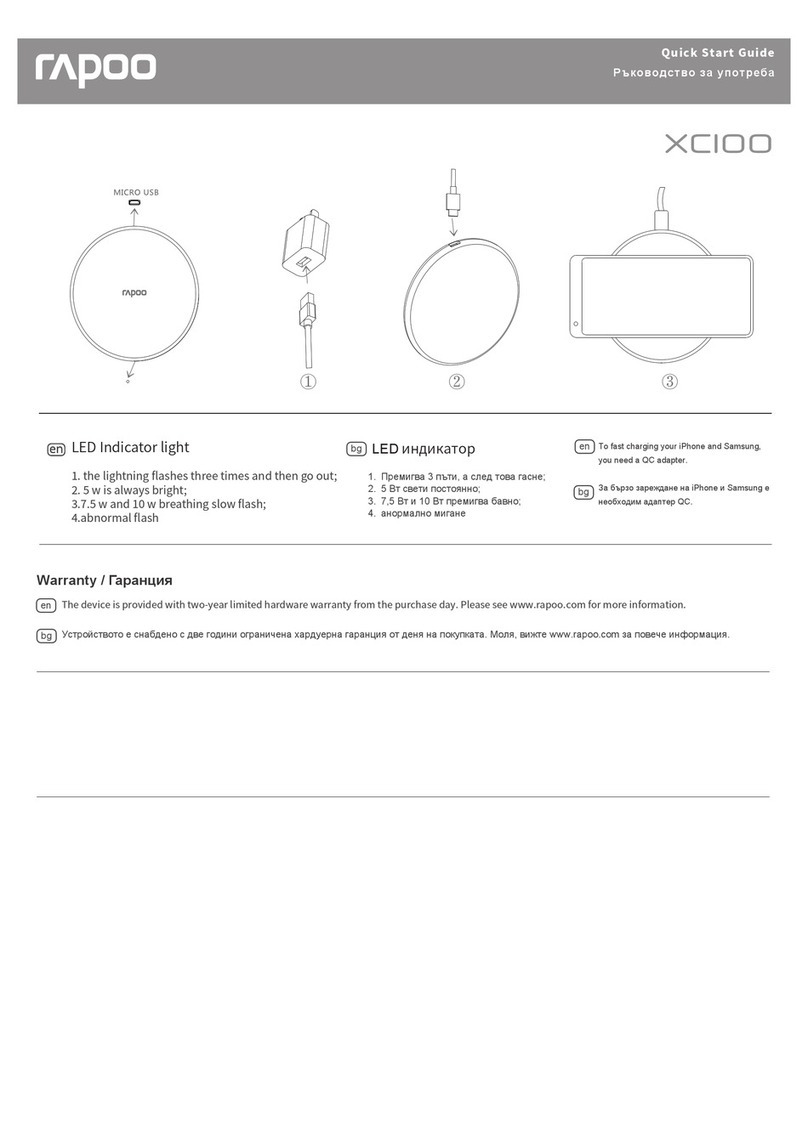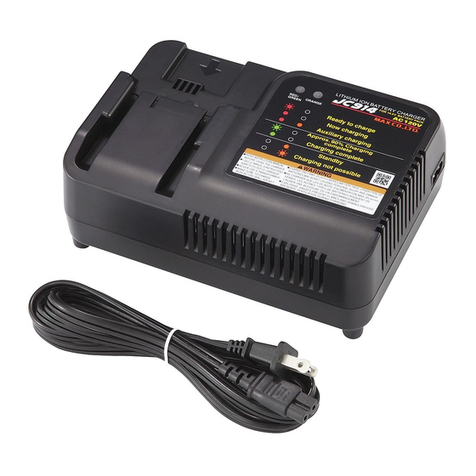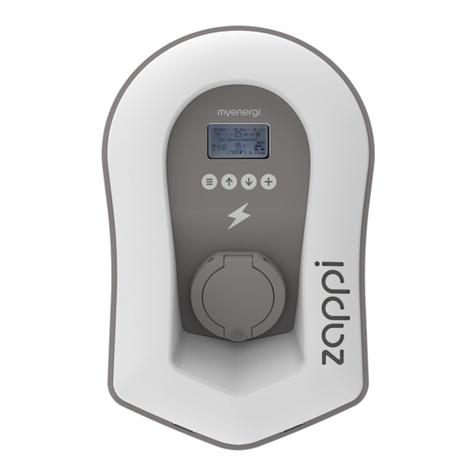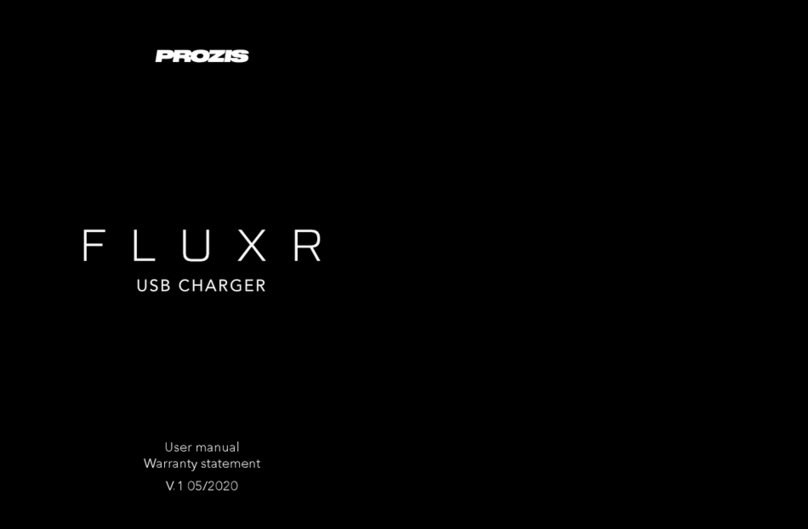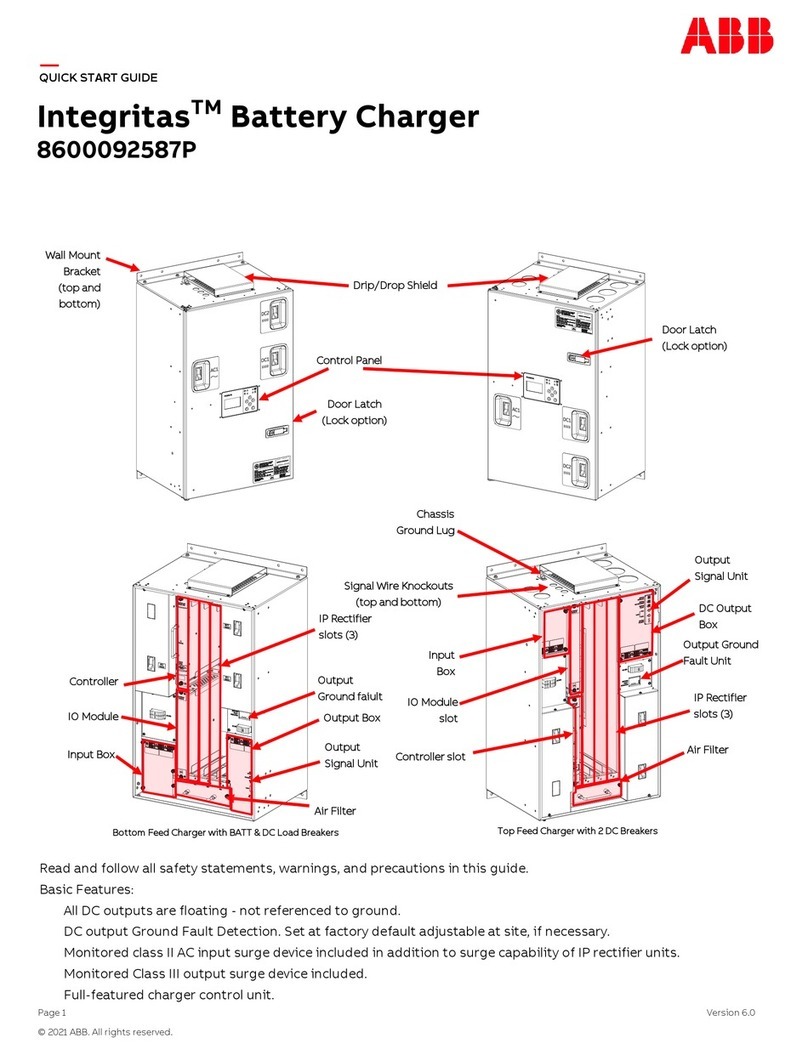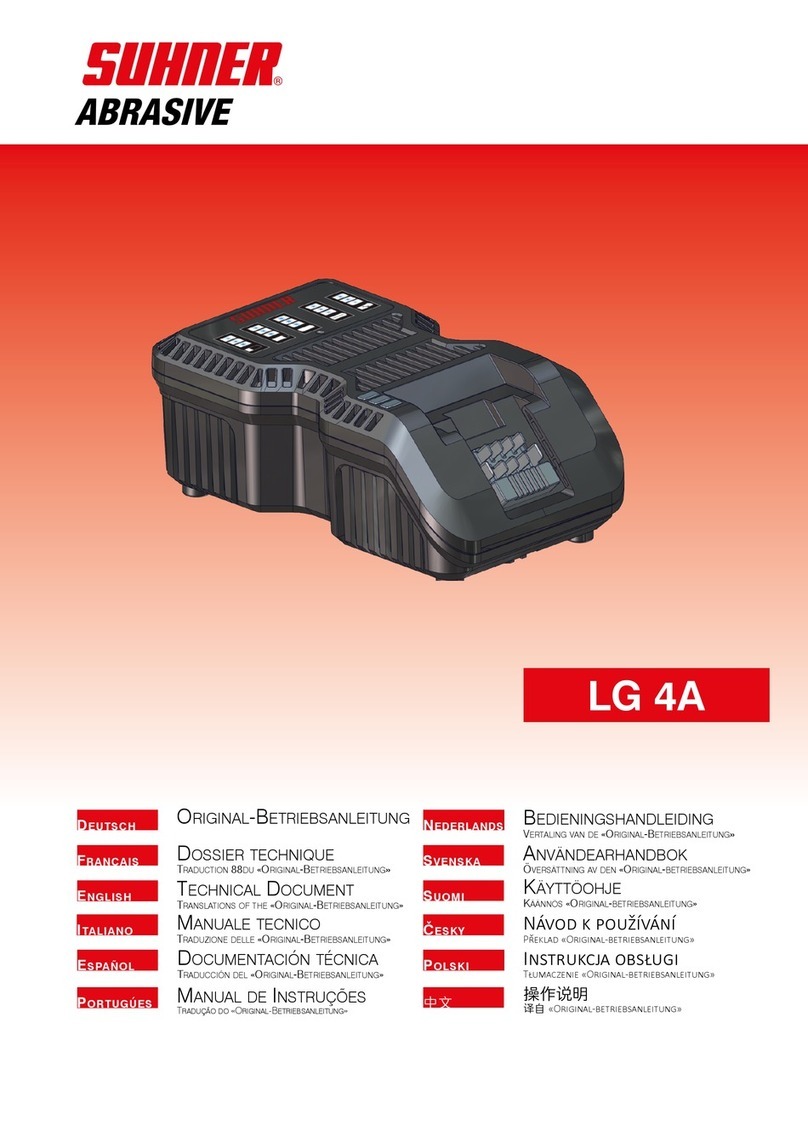English | 7
Bosch Power Tools 1 609 929 Y67 | (29.9.11)
Operation
Starting Operation
fObserve the mains voltage! The voltage of the power
supply must correspond with the data given on the name-
plate of the battery charger. Battery chargers marked with
230 V can also be operated with 220 V.
Charging Procedure
The charging procedure starts as soon as the mains plug of
the battery charger is inserted into the socket and the battery
1orthepowertoolwith theslidon battery1is inserted on the
battery charger.Thepowertool cannotbeswitchedonduring
charging.
Firstly, place the battery 1as shown in the figure onto the
front of the battery charger (n) and then press the battery 1
down at the rear (o). To remove the battery, proceed in re-
verse order.
Due to the intelligent charging method, the charging condi-
tion of the battery is automatically detected and the battery is
charged with the optimum charging current, depending on
battery temperature and voltage.
This gives longer life to the battery and always leaves it fully
charged when kept in the charger for storage.
Note: The charging procedure is only possible when the bat-
tery temperature is within the allowable charging tempera-
ture range, see Section “Technical Data”.
Meaning of the Indication Elements
Flashing Battery Charge Indicator 2
The charging procedure is signalled by a
flashing battery charge indicator 2.
Continuous Lighting of the Battery Charge Indicator 2
Continuous lighting of the battery
charge indicator 2indicates that the
battery is fully charged or that the
temperature of the battery is not with-
in the allowable charging temperature range, and cannot be
charged for this reason. The battery is charged as soonas the
allowable charging temperature range is reached.
When the battery is not inserted, continuous lighting of the
battery charge indicator 2indicates that the mains plug is in-
serted in the socket and that the battery charger is ready for
operation.
Troubleshooting –CausesandCorrectiveMeasures
Working Advice
With continuous or several repetitive charging cycles without
interruption, the charger can warm up. This is not meaningful
anddoesnotindicateatechnicaldefectof thebattery charger.
A significantly reduced working period after charging indi-
cates that the battery is used and must be replaced.
Maintenance and Service
Maintenance and Cleaning
If the replacement of the supply cord is necessary, this has to
be done by Bosch or an authorized Bosch service agent in or-
der to avoid a safety hazard.
If the battery charger should fail despite the care taken in
manufacturing and testing procedures, repair should be car-
ried out by an authorised after-sales service agent for Bosch
power tools.
In all correspondence and spare parts orders, please always
include the 10-digit article number on the type plate of the
battery charger.
After-sales Service and Customer Assistance
Our after-sales service responds to your questions concern-
ing maintenance and repair of your product as well as spare
parts. Exploded views and information on spare parts can al-
so be found under:
www.bosch-pt.com
Our customer service representatives can answer your ques-
tions concerning possible applications and adjustment of
products and accessories.
Number of battery cells 4–6 4–6
Weight according to EPTA-Procedure 01/2003 kg 0.7 0.4
Protection class / II / II
Battery Charger AL 2204 CV AL 2215 CV
Please observe the article number on the type plate of your battery charger. The trade names of individual battery chargers may vary.
Cause Corrective Measure
Continuous lighting of the battery charge indicator 2
No charging procedure possible
Battery not (properly)
inserted
Properly insert battery into battery
charger
Battery contacts con-
taminated
Clean the battery contacts (e.g. by
inserting and removing the battery
several times) or replace the battery
Battery defective Replace the battery
Battery charge indicator 2 does not light up
Mains plug of battery
charger not plugged in
(properly)
Insert mains plug (fully) into the
socket outlet
Socket outlet, mains
cable or battery charg-
er defective
Check the mains voltage; have the
battery charger checked by an au-
thorised after-sales service agent
for Bosch power tools
OBJ_BUCH-190-005.book Page 7 Thursday, September 29, 2011 9:18 AM

